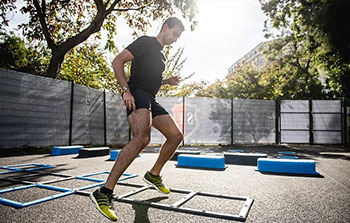 Modern research tells us that "old school" static stretching doesn't cut it before sports or intense exercise. We now know that dynamic stretching is the key to improving agility, speed, performance and decreasing injuries.
Modern research tells us that "old school" static stretching doesn't cut it before sports or intense exercise. We now know that dynamic stretching is the key to improving agility, speed, performance and decreasing injuries.
Benefits of a Dynamic Warm-Up:
Dynamic warm-ups decrease injury by prepping your body for the work. Sensors in your muscles start sending signals to your brain to communicate their needs. This results in increased responsiveness, so your body is primed for peak performance. Tailor your dynamic warm-up to your sport or activity so that the proper muscle groups are turned on and ready to go.
Is there still a place for static stretching? Yes. Incorporate slow, static stretching into your cool down routine.
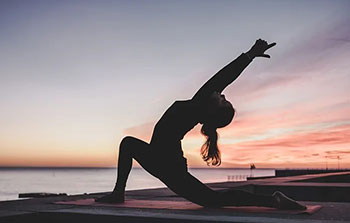 A routine yoga practice can reel in benefits like:
A routine yoga practice can reel in benefits like:
There IS something for everyone... from simple stretches to advanced power poses.
Got a desk job? Focus on your posture with seated twists, shoulder rolls, wide-leg forward bend, seated figure 4 stretch, seated backbend stretch, seated crescent moon, stork pose, wrist rolls. Or start with this video.
Commute much? Try these seat-friendly stretches when you're at your destination: Seated mountain pose, seated cat/cow pose, seated cobra pose, seated spinal twist, neck rolls, seated forward fold, and anterior shoulder stretch.
Need more cardio? Try power yoga vinyasas that include chaturanga dandasana, warrior poses, and arm-balancing poses.
Constantly stressed? Check out restorative yoga and use props to help you relax, clear your mind, and decompress.
Not sure what's right for you? Learn more about different yoga practices here.
Tips for beginners:
Get started today and feel the benefits of yoga for yourself!
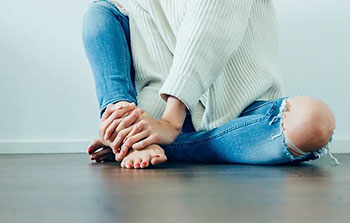 What are they?
What are they?
Foot cramps are a common, involuntary muscle spasm with a sharp or deep aching sensation, lasting seconds, minutes, or even days. Common causes include:
How to manage:
Foot cramps may also be a sign of nerve damage or an underlying health condition. Some medications have side effect profiles that include cramping. Talk to your healthcare provider if your foot cramps aren't improving.
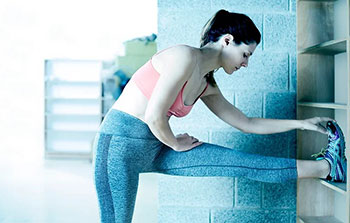 Leg cramps are more common than you think. Some reasons you may be familiar with, but others might surprise you:
Leg cramps are more common than you think. Some reasons you may be familiar with, but others might surprise you:
Suggestions for prevention:
To treat:
If you're taking any medications that increase the risk of muscle spasms or cramps, talk to your doctor about options including switching to a different medication, changing your dose schedule, or re-evaluating its necessity. If you're experiencing cramping that persists despite lifestyle changes, or start to experience muscle weakness, skin color changes, leg swelling, increase in frequency of cramps, or severe pain, it may be a sign of something more serious and you should seek medical care immediately.
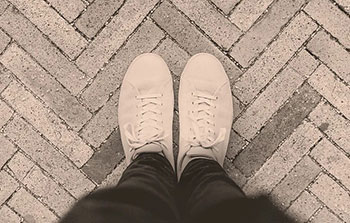 The normal curvature of your spine functions to dissipate ground reactive forces (Newton's 3rd law #biomechanics). If your center of gravity changes due to an abnormal gait pattern, inadequate support, or lack of shock absorption, the spine can no longer disperse forces effectively, and your spinal curvature adapts. This adaptation, or malalignment, causes back pain.
The normal curvature of your spine functions to dissipate ground reactive forces (Newton's 3rd law #biomechanics). If your center of gravity changes due to an abnormal gait pattern, inadequate support, or lack of shock absorption, the spine can no longer disperse forces effectively, and your spinal curvature adapts. This adaptation, or malalignment, causes back pain.
Your center of gravity shifts as you walk from heel to toe, evenly distributing your weight through the feet. Normal walking mechanics are achieved with footwear that supports your body weight. Without proper support, your center of gravity is thrown off, causing an abnormal gait, leading to stress and strain up the kinetic chain (from your feet up to the spine). Good posture and proper alignment & support keeps the body happy and pain-free.
Final thoughts:
Your feet are your foundation. Your shoes affect more than just your feet they impact your ankles, knees, hips, and spine. If you experience back pain, the first place to look is down!
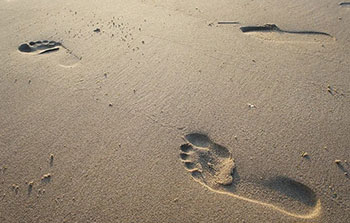 Most people can benefit from custom foot orthotics, but whether you NEED them can be discussed with your doctor. A foot & ankle specialist will examine your feet and evaluate your biomechanics and foot function. Your foot structure, weight, activity level, medical conditions, and foot deformities/ areas of pain (bunion, hammertoe, callus, pinched nerve, heel spur, etc.) all play a role in determining your need for custom orthotics.
Most people can benefit from custom foot orthotics, but whether you NEED them can be discussed with your doctor. A foot & ankle specialist will examine your feet and evaluate your biomechanics and foot function. Your foot structure, weight, activity level, medical conditions, and foot deformities/ areas of pain (bunion, hammertoe, callus, pinched nerve, heel spur, etc.) all play a role in determining your need for custom orthotics.
What options do I have?
1. Over-the-counter (OTC) orthotics might be a solution for some. Well-made brands can offer support and cushioning, but they're "one-size-fits-all" and won't provide personalized correction. While less expensive, they will need to be replaced more often. Ask your doctor if they're an option for you, and if so, what style they recommend.
2. Custom foot orthotics are recommended when your feet need extra help to function properly. Conditions like flat feet or high arches are common examples. Without support, your muscles, tendons and ligaments work harder to absorb the shock of your body weight. Over time, lax ligaments and instability contribute to conditions like arthritis.
If you experience foot pain, discomfort, or fatigue, it's time to schedule an appointment with a foot & ankle specialist. Custom orthotics may be the solution you've been looking for.
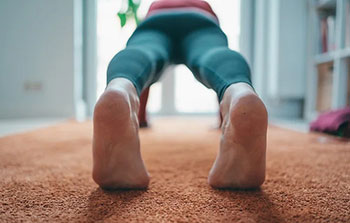 Heel pain can significantly impact daily activities and mobility, making it essential to identify the cause and seek appropriate treatment.
Heel pain can significantly impact daily activities and mobility, making it essential to identify the cause and seek appropriate treatment.
Heel pain presents as a symptom of many conditions, and it's crucial to identify the underlying cause before starting any treatment.
Common causes of heel pain:
When to seek treatment
If you experience persistent or severe heel pain, or discomfort that is affecting your daily life and ability to stay active, it's time to see a foot & ankle specialist. A thorough evaluation, physical exam, imaging (e.g. x-rays, MRI), and medical history review will be performed. Based on your diagnosis, treatment recommendations can be tailored to your specific condition and needs.
Failure to identify the cause of your pain can exacerbate the problem and/or delay proper medical care, ultimately leading to a longer road to recovery.
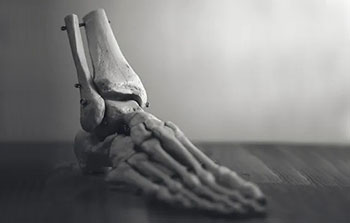 How to prevent Osteoporosis & its progression:
How to prevent Osteoporosis & its progression:
By adopting a proactive lifestyle that includes exercise and healthy habits, you can optimize bone health and reduce risk of osteoporosis-related complications.
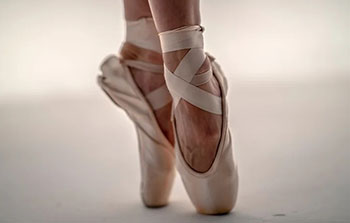 Excess moisture in shoes can hinder performance, cause discomfort, and increase risk of blisters and fungal/ bacterial infections of the skin and nails. Here are some expert recommendations on how to keep your foot-sweat under control:
Excess moisture in shoes can hinder performance, cause discomfort, and increase risk of blisters and fungal/ bacterial infections of the skin and nails. Here are some expert recommendations on how to keep your foot-sweat under control:
If you have specific concerns or conditions, consult with a healthcare professional for personalized recommendations.
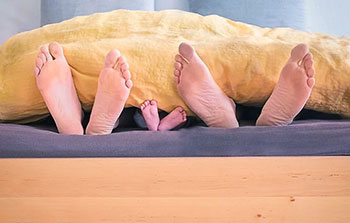 Flat feet can be inherited or develop over time with age, sports injuries, certain medical conditions, ligament/tendon damage or degeneration, increased weight, pregnancy, or from compensation due to inadequate support.
Flat feet can be inherited or develop over time with age, sports injuries, certain medical conditions, ligament/tendon damage or degeneration, increased weight, pregnancy, or from compensation due to inadequate support.
Flatfeet are seen in both children and adults and may be asymptomatic or symptomatic. For asymptomatic cases (especially in children), it's important to keep prevention in mind:
1. Eat healthy and stay hydrated to keep your cells functioning properly and help your body repair damage
2. Keep your muscles strong by exercising regularly, paying particular attention to ankle strengthening exercises
3. Wear supportive shoes when you're active
Flatfoot deformity can be progressive and may become symptomatic over time. Common complaints include achy, tired feet, or foot cramping after long periods of standing. Bunions, hammertoes, and arch collapse may also contribute, adding to the "flat" appearance of the feet.
If you have symptomatic flatfeet, the first step is to determine the cause. A proper evaluation with x-rays can answer questions and help direct a treatment plan. Every flatfoot is different! Treatment should be personalized and depend on your specific diagnosis.
For example, if the cause is:
- Tight muscles causing stress, destabilizing joints in the foot, a proper exercise program with an orthotic may be needed.
- Tendon degeneration, advanced imaging (MRI) may be needed to evaluate the extent of damaged tissue and assessing need for repair.
- Coalition of two bones, short-term immobilization in a boot or bracing may be recommended before jumping to surgery.
- Abnormal joint motion leading to arch collapse and instability, custom orthotics may be best for motion control and support.
-Chronic bone malalignment with abnormal joint wear and cartilage loss, bracing or surgery may become options.
Flatfeet aren't as simple as they seem. Your diagnosis might be more complex than a neighbor or even a family member! Custom orthotics are often the best non-surgical solution to help control abnormal motion in your feet, alleviating painful symptoms associated with flatfeet.
Prevention IS the best medicine! Schedule a consultation with us to help prevent worsening of symptoms.